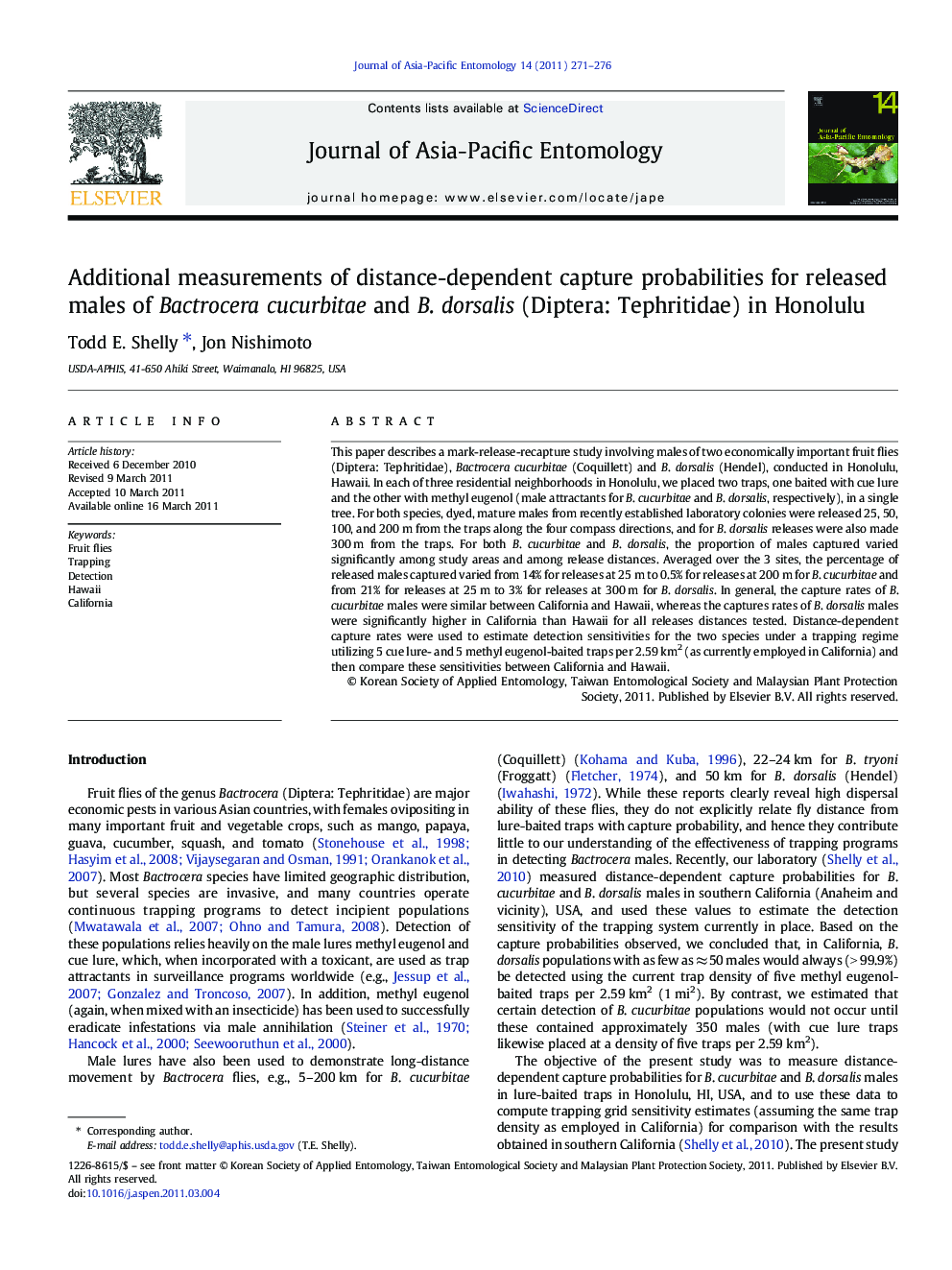| Article ID | Journal | Published Year | Pages | File Type |
|---|---|---|---|---|
| 4524716 | Journal of Asia-Pacific Entomology | 2011 | 6 Pages |
This paper describes a mark-release-recapture study involving males of two economically important fruit flies (Diptera: Tephritidae), Bactrocera cucurbitae (Coquillett) and B. dorsalis (Hendel), conducted in Honolulu, Hawaii. In each of three residential neighborhoods in Honolulu, we placed two traps, one baited with cue lure and the other with methyl eugenol (male attractants for B. cucurbitae and B. dorsalis, respectively), in a single tree. For both species, dyed, mature males from recently established laboratory colonies were released 25, 50, 100, and 200 m from the traps along the four compass directions, and for B. dorsalis releases were also made 300 m from the traps. For both B. cucurbitae and B. dorsalis, the proportion of males captured varied significantly among study areas and among release distances. Averaged over the 3 sites, the percentage of released males captured varied from 14% for releases at 25 m to 0.5% for releases at 200 m for B. cucurbitae and from 21% for releases at 25 m to 3% for releases at 300 m for B. dorsalis. In general, the capture rates of B. cucurbitae males were similar between California and Hawaii, whereas the captures rates of B. dorsalis males were significantly higher in California than Hawaii for all releases distances tested. Distance-dependent capture rates were used to estimate detection sensitivities for the two species under a trapping regime utilizing 5 cue lure- and 5 methyl eugenol-baited traps per 2.59 km2 (as currently employed in California) and then compare these sensitivities between California and Hawaii.
Graphical AbstractFigure optionsDownload full-size imageDownload as PowerPoint slide
